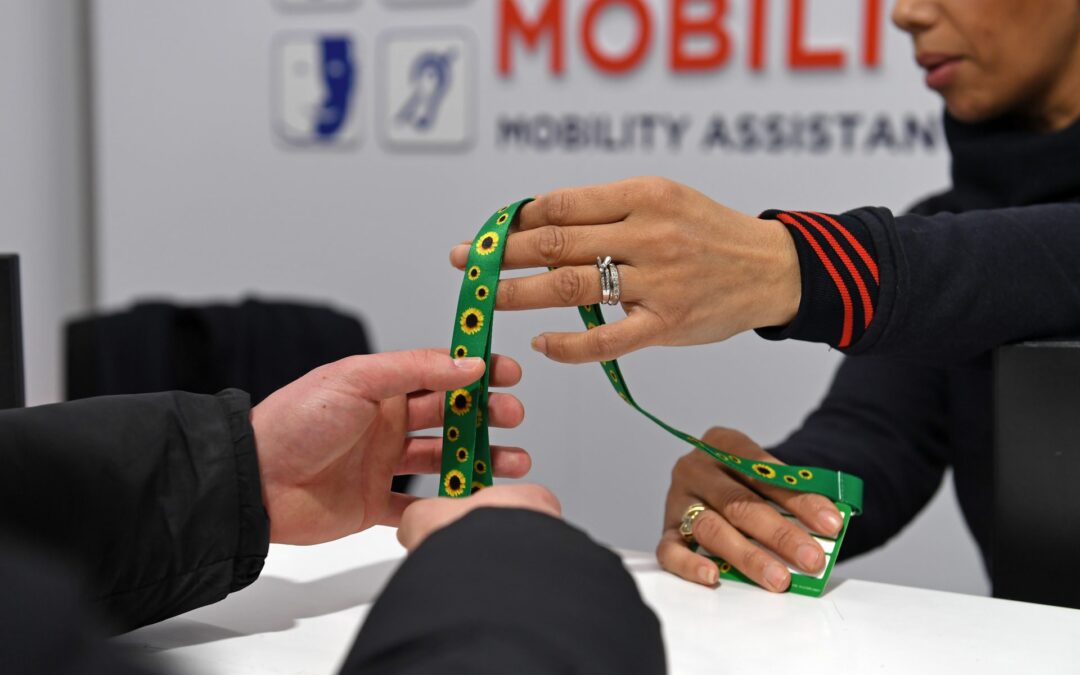What are Hidden Disabilities Sunflowers and why do we care in EmployAbility?
Hidden disabilities, also known as invisible or non-visible disabilities, are not immediately apparent to others. They encompass a wide range of conditions. These can include, but are not limited to:
- Chronic Illnesses: Conditions such as chronic fatigue syndrome, and Crohn’s disease.
- Mental Health Disorders: Anxiety, depression, bipolar disorder, and PTSD (Post Traumatic Stress Disorder).
- Neurodivergent Conditions: Autism, ADHD, and dyslexia.
- Sensory Impairments: Hearing loss, visual impairments, and processing disorders.
The common thread among these conditions is that they are not immediately visible, which can make it challenging for individuals to receive the understanding and accommodations they need.
Disabilities can significantly impact the lives of those affected, often leading to misunderstanding and lack of support in public spaces. Although we work predominately with Spinal Cord Injuries (SCI) which is classified as a Physical Disability, it may surprise you to learn that people with a SCI have hidden, underlying disabilities that define their quality of life. Sometimes even more than the physical disability outwardly present. For example, our SCIA Peer Support team Rob, Heidi, and Dan are incredibly open about their daily challenges. All three use wheelchairs (non-hidden) and all three encounter multiple nonvisual challenges such as bowel and bladder issues and changes in mental health.
It must be noted here that Hidden Disabilities for wheelchair users require more research in the areas of support and health assessments, especially for ongoing psychosocial support, as individuals with SCI are reported to have more than a three-fold higher suicide incidence than those without SCI. This is a devastating statistic that our dedicated Peer Support team are painfully aware of.
The Sunflower Lanyard Scheme
In recent years, the Sunflower Lanyard Scheme has gained popularity to indicate that someone has a hidden disability and may require more support or understanding. Originating in the UK, the initiative has spread to various countries including Australia, becoming a recognisable symbol of invisible disabilities.
The sunflower lanyard features a bright green strap adorned with sunflower designs. It is worn around the neck or wrist and serves as a discreet signal to others that the wearer may need extra assistance, patience, or accommodations. In addition to lanyards, sunflower-themed wristbands, badges, and other accessories are also available.
How It Works
The sunflower lanyard and wristbands are not an official disability identifier but rather a voluntary signal. They are available for free or at a nominal cost from various organizations, including airports, supermarkets, and public transport services. By wearing the lanyard, individuals with hidden disabilities can communicate their needs without having to verbally disclose their condition, which can be stressful or uncomfortable.
The Impact of the Sunflower Lanyard Scheme
The adoption of the sunflower lanyard has been a significant step forward in raising awareness and fostering inclusivity for people with hidden disabilities.
Here are a few key impacts:
- Increased Awareness: The visibility of the sunflower lanyard has helped to raise awareness about hidden disabilities, prompting more people to educate themselves about the diverse range of conditions that can affect individuals.
- Enhanced Support: In places where staff are trained to recognise the sunflower lanyard, individuals wearing it can receive more personalised and considerate service. This can include priority seating, extra time at checkouts, or assistance with navigation and communication.
- Empowerment: For many people with hidden disabilities, wearing the lanyard provides a sense of empowerment. It allows them to take control of their needs and seek the support they require without having to repeatedly explain their condition.
- Community and Solidarity: The lanyard also creates a sense of community among those with hidden disabilities. Seeing others wearing the sunflower symbol can be reassuring and can help to reduce feelings of isolation.
Hidden disabilities, though invisible, have a profound impact on the lives of millions. The Sunflower Lanyard Scheme is a simple yet powerful initiative that promotes understanding and inclusivity. By recognising and respecting the sunflower symbol, society can take a significant step towards supporting individuals with hidden disabilities, ensuring they receive the consideration and assistance they deserve.
As awareness continues to grow, the hope is that more environments will become accommodating and empathetic, making the world a more inclusive place for everyone, regardless of the visibility of their disability.
Ref:
- https://www.ncbi.nlm.nih.gov/pmc/articles/PMC10620485/
- Image credits: https://hdsunflower.com/uk/insights/post/charles-de-gaulle-and-orly-airports-are-sunflower-friendly?fbclid=IwZXh0bgNhZW0CMTAAAR2PNE_2b0vOtcZCduNCavUWszccrESiAufLlR_m6TloidMyv8GgHtET3Vw_aem_AVVnbonhZhKseZjKWp9wMIdiRHfZQZ4Ltud6I1RfAUw_4Vt9ZbW9duhFfh7u2s0emW9KLMu-v7cSQKPfCUPZ7z9e
- https://hdsunflower.com/au/

